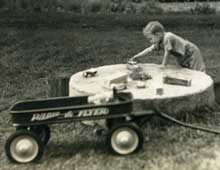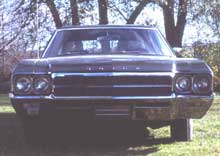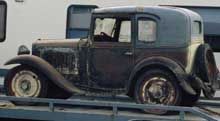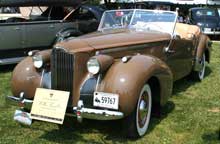A Few of My Favorite Things
On my third birthday, September 9, 1947, I was given a bright red Radio Flyer wagon. It was not my first wheeled vehicle - I had a stroller-turned-kiddie-car when a toddler, but after my sister was born my Dad put on a rumble seat so I had to share it. The Radio Flyer, though, was all mine, and I used it for hauling, for downhill coasting, for learning to drive - at least I pretended to do so.
Although the first of the Tonka toys debuted shortly afterwards, I never had any. A few years later I was given a Doepke toy, the Adams road grader. Doepke made a whole series of construction toys as well as a few large-scale cars. My grader built miles and miles of roads, and looked something like this afterwards. My real workhorse was a Smith-Miller short-wheelbase rack body truck like this one. When I bemoaned the fact that it wasn't a dump truck, which I needed for roadbuilding, Dad made an ersatz dump body out of an old turpentine can and it worked fine. I was proud of my Doepkes and Smith-Miller, looking down my nose at other kids' Tonkas and Marx trucks because they were not as realistic. When I was about twelve, an older friend gave me his Doepkes, including a Wooldridge earth mover, a cement mixer and another Adams grader, ones that had rarely, if ever, been outside. By that time I was spending more time on my bicycle than building roads, so they remained in good shape.
When our children reached toy-playing age, we bought them Tonkas and I kept my treasures in the attic. So today, my Doepkes, the Adams grader, Wooldridge earth mover and cement mixer, are still in pretty good shape. My favorite is still the Smith-Miller GMC cab-over truck. For all the work it's done it's in remarkable condition, largely because it's mostly cast aluminum. Of course I needed cars to drive on the roads I built. I don't remember what happened to the third-birthday cars, but I had several generations of others. Some lasted better than others, but that's a story for another time.
The Radio Flyer is still with us. It graduated to gardening duty, was repainted many times and eventually advanced wear required a bit of reinforcement. We still use it for chores around the yard, and on occasion I reminisce about its role as a scooter, for parallel parking and for speedy downhill rides.




